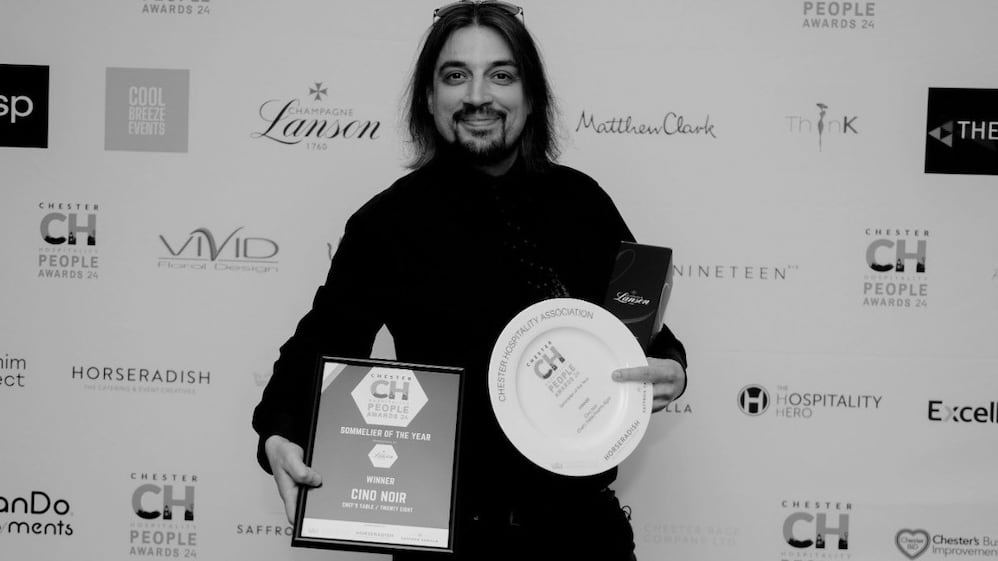Tell us about the moment you first became interested in wine
My interest in wine began when I noticed a colleague, who was my age, splurging all his money on fine wines. I thought, “who wouldn’t want to be that person—young, wine-savvy, and living the high life?”. But as I started diving into the world of wine, I realised it wasn’t just about flaunting luxury. I was hooked on the whole winemaking process and the art behind each bottle.
Describe your wine list at Chef’s Table and twenty eight
At Chef’s Table, we focus on European and Middle Eastern wines, particularly from lesser-known countries. A notable mention is Mephisto Wine company, who produce Croatian, Georgian and Romanian wines. I love bringing in wines from regions that primarily drink domestically. Nothing makes me happier than when someone says, “Romania? I didn’t even know they made wine!” For twenty eight, our more casual small plates restaurant, which has a strong farm to table ethos, I’ve created a more farm-related wine list to complement its values. All the wines are vegan, with a focus on organic, biodynamic or natural winemaking.
Over the course of your career, have you had any wine-related disasters?
Yes, loads! The worst one happened when a guest had to leave because his wife was going into labour. He had just bought two expensive bottles of wine—one white and one red. All I had to do was pour the wine from the glasses back into the correct bottles. Unfortunately, I mixed them up and ended up pouring the white wine into the red bottle and the red wine into the white bottle. It cost the restaurant about £2,000.
Name some of your top restaurant wine lists
One of my favourites is Hakkasan (where Noir used to work). With Chinese cuisine, there is no established wine industry that pairs perfectly with the food, so we had to think outside the box. We experimented with a wide range of wines, focusing on unique and quirky dry whites, especially to complement the fish dishes. The result is a wine list that’s full of unusual and interesting options that you wouldn’t normally find. Another standout is Restaurant Guy Savoy in Las Vegas. I’m a big fan of this place. When I visited, I wanted a Meursault. Instead of just having one or two bottles on the list, they had such an extensive selection that they brought out a trolley with five different Meursault’s. I spent ages choosing the perfect one. The sheer size of their wine list and the way they present their options was amazing.
Who do you most respect in the wine world?
I have a lot of respect for my former boss, Christine Parkinson. She was the wine buyer for Hakkasan and is one of the most respected buyers in Europe.
What’s the most interesting wine you’ve come across recently?
I recently became really interested in Armenian wine. It’s likely the second oldest wine-producing region in the world, so their wines have a rich history and unique character.
What’s the best value wine on your list at the moment?
At Chef’s Table, one of the best value wines is the Israi Oliver from Etyek-Buda, Hungary (£36). It’s a unique and high-quality wine that offers great value for the price.
Over at twenty eight it would be a vegan Shiraz from South East Australia – Record Sun (£28).
What is your ultimate food and drink match?
I’m a big fan of Thai cuisine paired with Gewürztraminer. The name Gewürztraminer literally means “spicy grape from the village of Traminer.” When you eat spicy Thai food, your palate is dominated by the cooking spices. But when you drink Gewürztraminer, the spice in the wine is muted, allowing you to fully taste the fruity flavours, like lychee. The reverse is also true—if you sip the wine first, it balances the spice in the food, highlighting the flavours of the dish.
Old World or New World?
Definitely Old World, there’s much more variety. In Europe, the diverse seasons create different growing conditions.
What is your pet hate when it comes to wine service in other restaurants?
When wine service is either overlooked or done carelessly. I believe in keeping a close eye on guests’ glasses, offering regular, small top-ups rather than one large pour, or worse, forgetting about them entirely.
Who is your favourite producer right now?
At the moment, I’m really enthusiastic about Beres. They’re producing outstanding wines from Hungary, especially their dessert wines from Tokaji. The quality of their sweet wines is exceptional, and they also make some impressive dry wines.
As a sommelier, what question do you most get asked by customers?
The most common question I receive is for recommendations. Given that our wine list is quite unique and features some less conventional options, customers often seek my guidance to help navigate it.
Which wine producing region or country is underrated at the moment?
Despite its rich winemaking history dating back to 7000 BC, Lebanon doesn’t receive as much recognition as it deserves. Their wine culture is heavily influenced by French traditions. Their grape varieties, winemaking techniques, and overall philosophy reflect this French connection.
It’s your last meal and you can have a bottle of any wine in the world. What is it and why?
For my last meal, I’d have to go with Ruinart Les Exclusifs. This Champagne is amazing because it blends the best five vintages from the last hundred years, so it’s got incredible depth and quality. I have fond memories of enjoying it with friends and geeking out over its unique characteristics.


